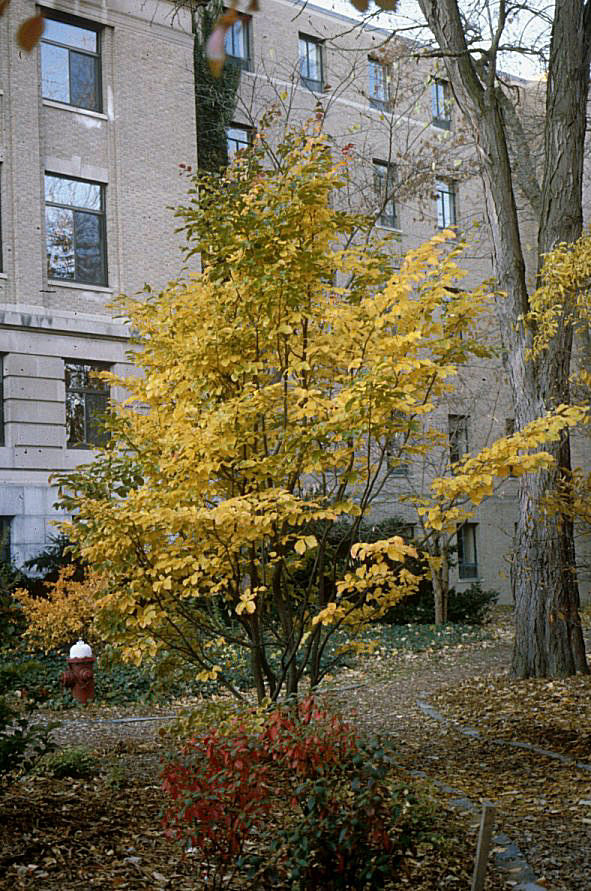| Botanical Name: Parrotia persica | |
| Common Name: Persian Ironwood |

-
Anatomy
-
Culture
-
Design
Plant Type
Tree
Height Range
12-25', 25-40'
Flower Color
Purple, Red
Flower Season
Spring
Leaf Color
Dark Green, Purple
Bark Color
Grey
Fruit Color
n/a
Fruit Season
n/a
Sun
Full, Half
Water
Medium
Growth Rate
Moderate, Slow
Soil Type
Clay, Loam
Soil Condition
Average, Rich, Well-drained
Soil pH
Neutral
Adverse Factors
n/a
Design Styles
English Cottage, Formal, Ranch, Woodland
Accenting Features
Fall Color, Multi-trunk Tree, Specimen, Unusual Foliage
Seasonal Interest
Winter, Spring
Location Uses
Background, Shrub Border, Foundation, Patio, Walls / Fences
Special Uses
Screen, Shade Tree, Small Spaces
Attracts Wildlife
n/a
Information by: Stephanie Duer
Photographer: Jennifer Chandler
Photographer: Jennifer Chandler
-
Description
-
Notes
An uncommon little tree, Persian ironwood is a small, deciduous tree growing slowly to 20 feet but can mature at 40 feet, and 10 to 20 feet wide. Spring leaves emerge reddish, mature to green, with yellow to orange (with a smattering of red) fall color. Though deciduous, it provides a lovely winter vignette: the leaves turn a rich russett brown and stay on the tree until new leaves start to emerge in the spring. Additionally, the mature wood exfoliates, creating an interesting texture. Grown as both a single or multi-stemmed tree. Slow to establish, but a lovely tree for a small area. It has flowers, but the tree has to have some years on it before they appear, and then they blossom under the foliage so place a bench under the tree an enjoy the show.
Grow in full sun in well drained soil; tolerates some shade. Though usually identified as preferring acidic soils, it seems adaptive to other soils as long as they are well-draining. Does well in clay or loamy soils. Tolerant to drought, heat, cold, and wind. Does not generally require pruning, though as the tree grows, it can be limbed up a bit to create a canopy (see Resources). Hardy to USDA Zone 4.